David Maruma was in bed at 2am on Friday when he was jolted awake by his nephew’s frantic banging on the door. For a few moments, the father-of-five thought his family was falling victim to another robbery.
He quickly realised the reason for his nephew’s panicked screams: their home in the Roodepoort suburb of Hamberg was being swallowed by rising floodwaters.
“There was water everywhere,” said Maruma, his eyes haunted, as he recalled the water level that reached past his waist. “Our couches were floating past us … We have never experienced anything like it.”
His family was among 339 people affected by the floods that battered Johannesburg over the weekend, submerging vehicles, trapping homeowners on roofs, collapsing walls, and decimating shacks and houses. About 269 of these structures were swept away.
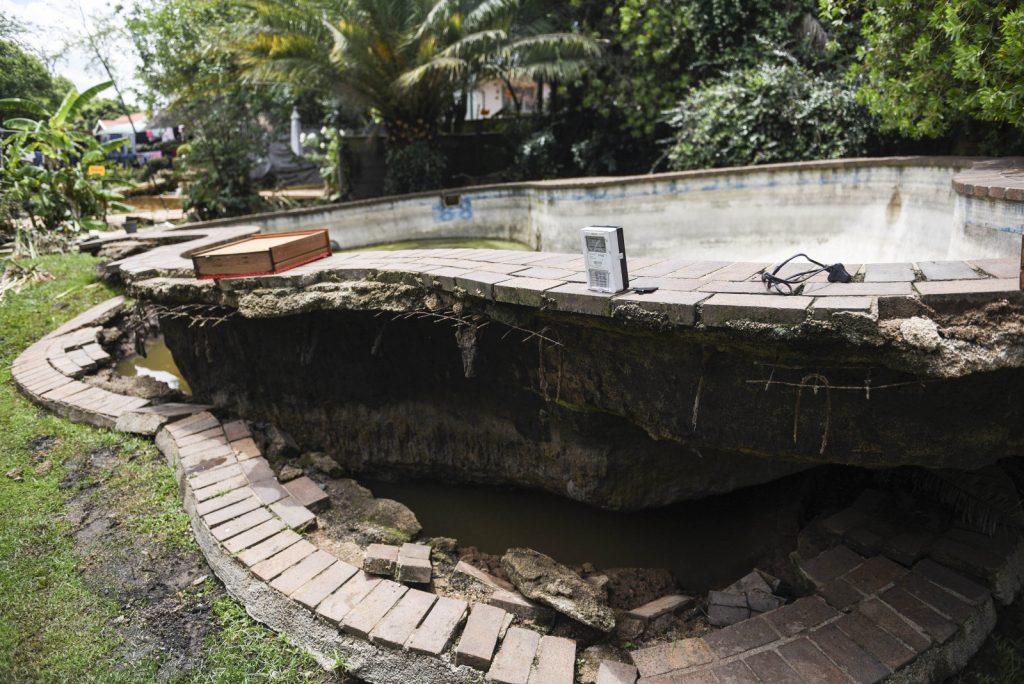 More damage caused by flooding in Hamberg, Roodepoort.
More damage caused by flooding in Hamberg, Roodepoort.
‘I saw death that night’
Their home runs alongside the Hamberg stream and is near the Hamberg Dam, which were both overflowing.
The torrent was surging inside Maruma’s home from all directions. “We were trapped. I told my wife and children to leave everything, we have to get out,” he said, relaying how frogs, large fish and crabs were being washed onto their property.
Their backyard, their only escape route, was submerged. “Another wall fell down from the force of the water and even more water rushed in. Two of my children lost their grip and were washed towards the swimming pool. I had to swim to get hold of them.”
One by one, they eventually clambered up a stepladder into a neighbour’s property. “We were escaping from raging waters … I could see death that night, that I’m going to lose all of my children.”
Their car was swept away, as was their dog, who has not been found. “We are all traumatised and living with flashbacks. Every time we see clouds, we panic,” he said of the persistent rainfall this week. “If this stream was maintained, then the water would not have flowed onto our property.”
With a look of disbelief, his neighbour, Goodwill Ngwenya, showed how the flood had pushed his swimming pool out of the ground. Neighbours used ropes to rescue Ngwenya and his sons, who were stranded on their roof. He, too, has lost everything.
“We are lucky to have survived,” he said. “I don’t know how we will recover. If these stormwater drains can just be fixed then we won’t be having such disasters.”
Destroying infrastructure, lives
The recent flooding destroyed infrastructure and lives, said the City of Johannesburg’s MMC for Public Safety, David Tembe. Heavy rains on 9 December, in particular, “saw some residents of Joburg go through the most difficult of conditions”.
“We can blame climate change but the bottom line is maintenance and there is no maintenance,” he said. “Bridges are not maintained, stormwater drains are blocked and water overflows to where it’s not supposed to be.”
Tembe said the cost of the damage is huge, adding that the City of Johannesburg is working on a plan to declare a state of disaster to secure relief funds.
A city official said that while there is not an estimate at this stage as to how much exactly the damage is going to scale to, “it’s safe to say in the billions”.
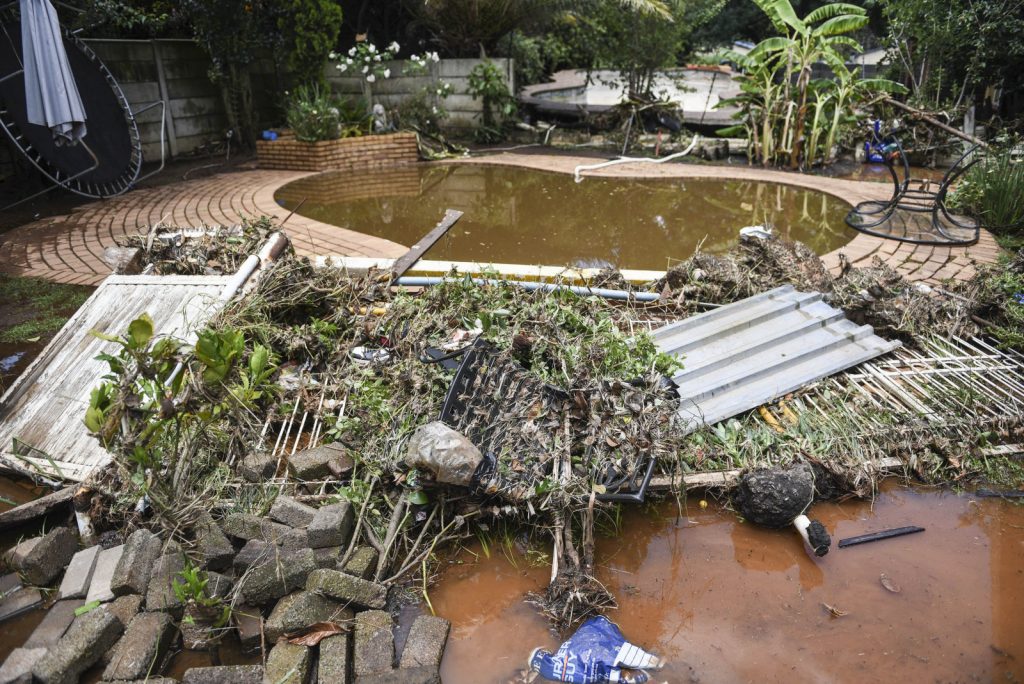 More damage caused by flooding in Kliptown, Roodepoort.
More damage caused by flooding in Kliptown, Roodepoort.
‘People were screaming’
Olipi Tsukudu was asleep in her shack in Kliptown, Soweto, on Friday when the Klipspruit burst its banks. “People were screaming for us to get out. There was water everywhere,” she said while cleaning what she had managed to salvage from the ruins of her home, near the floodline. “Our things are all gone with this water. It’s only a disaster now.”
Her neighbour, Zodwa Ndlovu, showed the bare rectangle where her family’s shack stood before it was washed away. “When we woke up the water was all over, we managed to take only a blanket and the baby. Everyone was running for their lives. We lost everything. We don’t know where we’re going to sleep.”
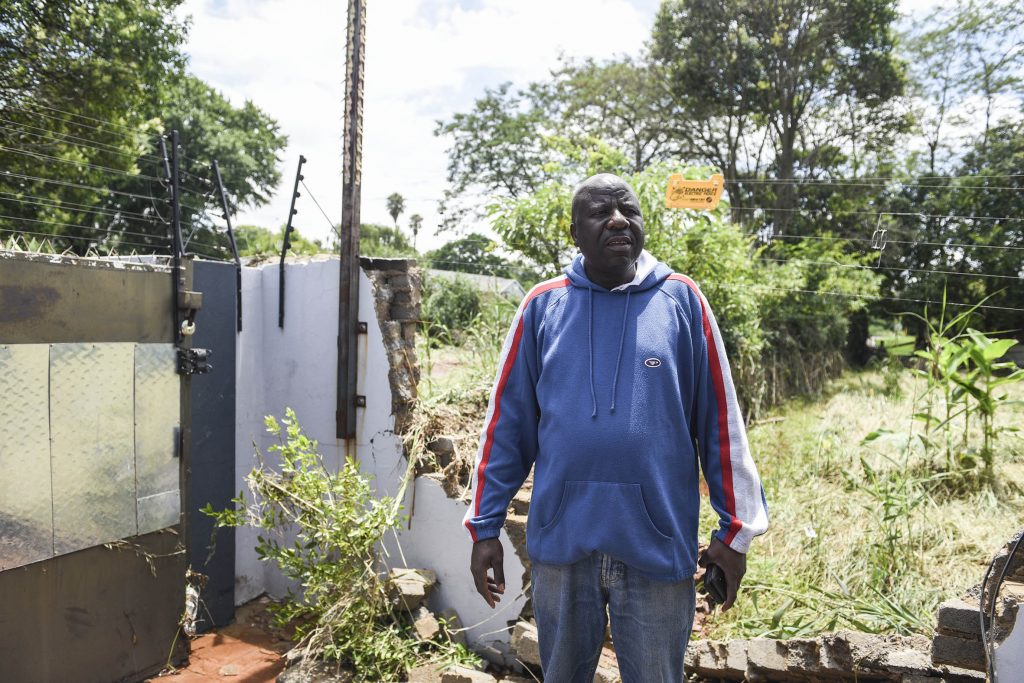 Davie Maruma outside his flood-damaged home in Hamberg, Roodepoort.
Davie Maruma outside his flood-damaged home in Hamberg, Roodepoort.
Jukskei River community ‘in distress’
The situation in Setswetla, Alexandra, is “unfavourable”, said Tembe. “Our recent visit with executive mayor Mpho Phalatse and other members of the mayoral committee painted a picture of a community in distress. The building of shacks on river banks persists, rendering residents vulnerable and in danger of being swept away by raging floods at any given time.”
Paul Maluleke, of the Alex Water, Sanitation and Environment Community Forum, said: “Most of the people who build along the river, they are from other countries, mostly like Mozambique. But around Setswetla, it’s mostly South Africans — people who thought they were going to get houses. The political parties play a role — they use the people … to get more votes.”
He said people illegally dump rubble on the banks of the Jukskei to build accommodation and rent it out. This rubble often arrives from demolition sites outside of township areas. “They don’t care. The river is eroding again and the government is not coming to the party. The biggest challenge we have is our ward councillors. This thing is happening in front of our eyes, we’ve been reporting, calling MMCs, but nothing is happening.
Drowning
On 3 December, 14 members of the Masowe Church drowned during a flash flood in the Sandspruit River while holding a baptism ceremony. The search and recovery operation for a missing three-month-old baby continues.
Mark McClue, the chief executive of nonprofit Action for Responsible Management of Our Rivers (Armour), who was involved in the search and rescue operation, said all the city’s rivers were affected by the heavy rains.
“Some of the areas have had probably 80%, 90% of their annual rainfall within this period. But you have to remember that this period is our rainy period. So, to say that it’s received it all now, doesn’t mean to say that’s it’s in excess.
“The challenge is that when it lands on the Witwatersrand ridge, it all depends on where the cloudburst falls, relative to all of the urban development.”
Last week’s floods landed on Killarney and Houghton and the area of the Wilds and Killarney golf course. “That catchment on its own then flows into what is known as the Sandspruit River, and that Sandspruit River not long after the Killarney golf course, turns into a concrete channel where urban development and stormwater measures have channelled it off the golf course area from all the hills, and … from the main highways and the roads, through the stormwater system into that channel and it rushes down there towards Bramley and Corlett Drive.
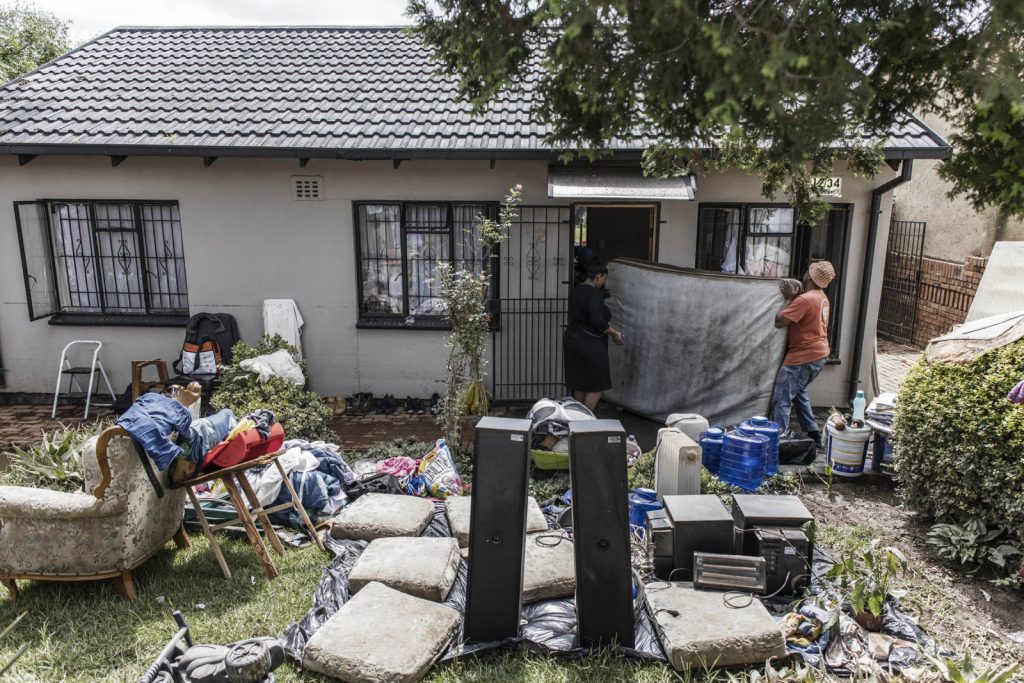 Residents remove a damaged mattress among furniture left to dry in the garden of her flooded house in Klipspruit West, Soweto, on December 10, 2022 in an area that was flooded following heavy rains. (Photo by MARCO LONGARI / AFP)
Residents remove a damaged mattress among furniture left to dry in the garden of her flooded house in Klipspruit West, Soweto, on December 10, 2022 in an area that was flooded following heavy rains. (Photo by MARCO LONGARI / AFP)
“It was just downstream of there where the baptism group were congregated and it’s arguable that they didn’t even know that this wave of water was coming. So, it’s these waves of water that catch people unawares.”
Among the main rivers where “we have problems” are the main Jukskei itself, which drains from the Johannesburg city centre, the Sandspruit, Braamfontein spruit, the Klein Jukskei and Little Crocodile, which are “all flowing north, over low level bridges and through formal and informal residential areas”, as well as the Klip Vaal system to the south.
Nickolaus Bauer, spokesperson for the City’s environment and infrastructure services department, said: “The Jukskei and Braamfontein spruit remain the most problematic from a flooding perspective. Illegal dumping is a major issue as has been seen in the Jukskei tragedy near the Marlboro Gautrain station.”
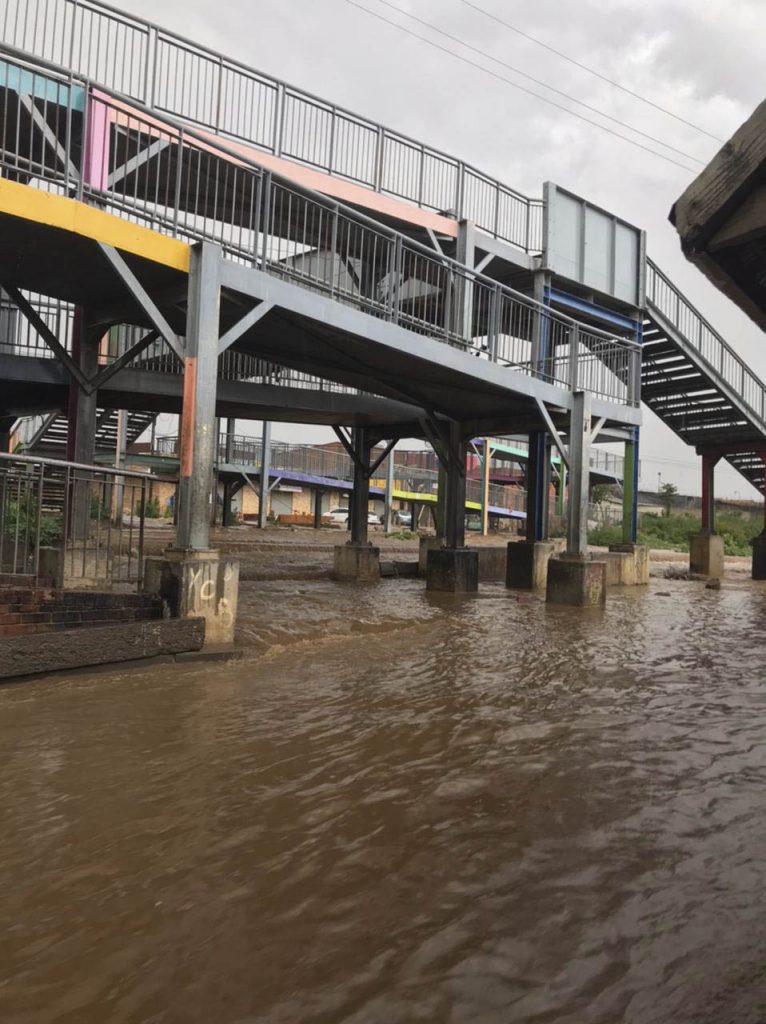 Flooding in Kliptown.
Flooding in Kliptown.Sensitive urban development
Johannesburg is on the headwaters of the continental divide, said professor Chris Curtis, of the department of geography, environmental management and energy studies at the University of Johannesburg. “The water has nowhere to go when we have these big storm events, because we’ve concreted over all the wetlands and all the areas where it should be infiltrated into the soil.
“Building on rivers and wetlands has happened a lot in Joburg. I don’t know whether it’s unscrupulous developers or an ignorance of the risks but that’s a large part of it,” said Curtis, who called for more sensitive urban development, investment in sustainable urban drainage systems and wetland restoration, to reduce flooding-related risks.
‘Sponge cities’
Dr Jackson Sebola, a lecturer in the department of urban and regional planning at the University of Johannesburg, said those who live on floodlines and floodplains reflect “the population growth that is happening in Johannesburg. “They don’t choose to live [there] but have come to look for better opportunities in the city.”
Climate change, he believed, is the main driver for the flooding and “needs to be taken very seriously”, but cities like Johannesburg have not adequately prepared. The city, he said, needs new, “relevant” infrastructure to build climate resilience, including permeable roads and pavements “so the water can get in the ground”.
Sebola cited how, to deal with flooding risks, China had introduced sponge cities to absorb water. Johannesburg, he said, must follow suit.